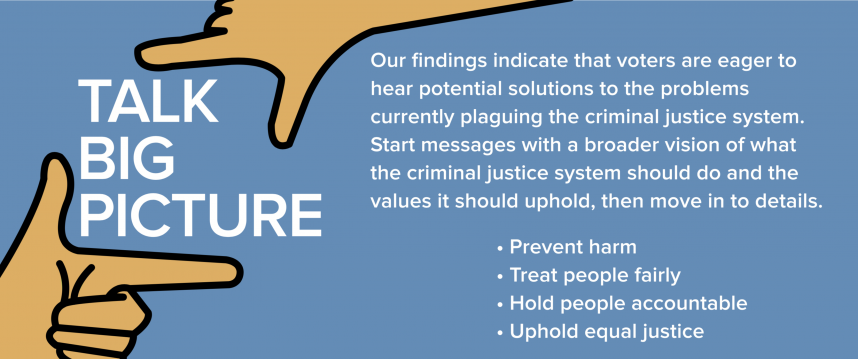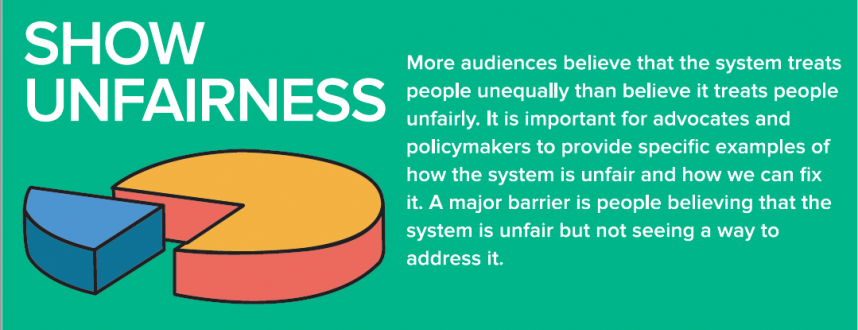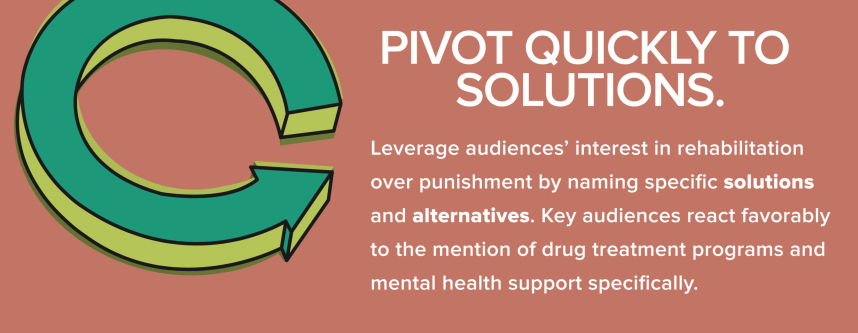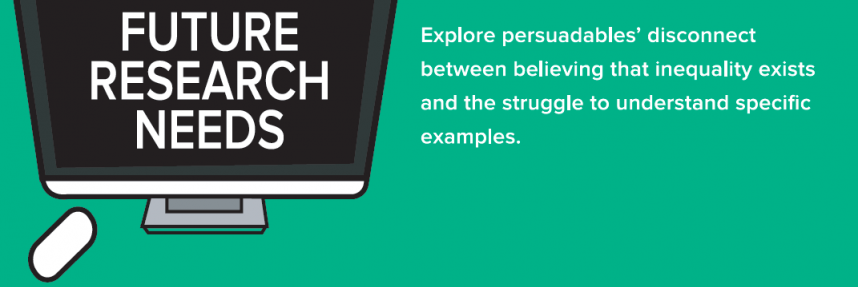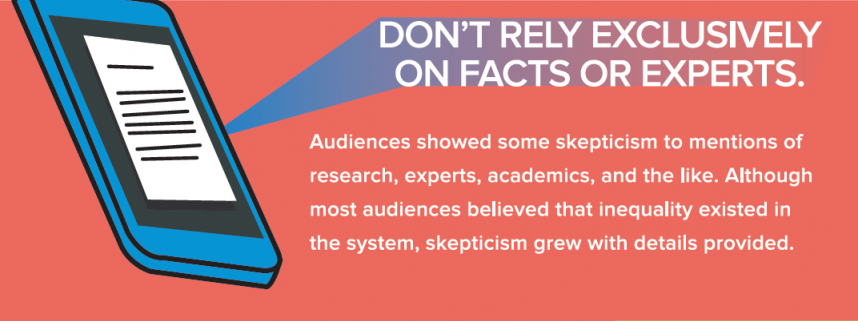10 Key Facts About Perception of Fear, Safety & Criminal Justice in CA
INTRODUCTION
In recent years, California has emerged as fertile ground for progressive criminal justice reform, with the passage of policies such as SB 439, SB 1319, and SB 10—just a few examples of activists, advocates, and policymakers’ recent success working within the state. Despite these many gains, challenges abound, including continued resistance to the adoption of policies that rectify the disproportional targeting of communities of color in the past. At the same time, the overt xenophobia in today’s political discourse has made fear-mongering and scapegoating more commonplace in law enforcement and other government agencies interactions with communities of color.
With the goal of gaining a better understanding of these state-level successes and challenges while also gathering insights that can be translated to messaging strategy for use in the field at large, The Opportunity Agenda and the ACLU of California engaged in a collaborative research project examining Californians’ attitudes and beliefs about the criminal justice system. This memo draws from the data from a statewide survey of 1,055 randomly sampled respondents representative of Californians administered in July 2018.
METHODOLOGY
This memo draws on the results of a collaborative research project with the ACLU of California conducted in July 2018. The insights are based on data from a statewide online dial survey administered to a total of 1,055 registered voters in the state. The margin of error is ± 3.1 percent for the overall sample and larger for subgroups.
In this memo, we make references to three populations defined as the base, opposition, and persuadables. Our base, opposition, and persuadables were created using a statistical cluster analysis that identified groups of like-minded voters based on the patterns of their responses to a series of questions about their attitudes toward the criminal justice system, discrimination, racial inequities, and a variety of related topics.
ACKNOWLEDGEMENT
The Opportunity Agenda wishes to thank and acknowledge the many people who contributed their time, energy, and expertise to the research and writing of this report. The survey was commissioned and designed in collaboration with Cheryl Alethia Phelps, Communications Director of the ACLU San Diego and Imperial County and Margaret Dooley-Sammuli. Data was collected, cleaned, and analyzed by Andrew Hart and Steven Riskey of Strop Insights and Kyle Francis of Qualtrics. Additional analysis of data and the drafting of this report was conducted by Lucy Odigie-Turley of The Opportunity Agenda. Recommendations were drafted by Julie-Fisher Rowe of The Opportunity Agenda. The graphics and illustrations were created by Lincoln Bovell. Final proofing and copy editing were conducted by Margo Harris. Finally, this report would have not been possible without the support of our generous funders: American Civil Liberties Union, John D. and Catherine T. MacArthur Foundation, Marguerite Casey Foundation, Nathan Cummings Foundation, The Annie E. Casey Foundation, The Ford Foundation, The JPB Foundation, The Libra Foundation, The Tow Foundation, Unbound Philanthropy, and W.K. Kellogg Foundation.
1. California has a strong base of support for wider criminal justice reform, and a significant portion of Californians are persuadable on a variety of reform issues
As of July 2018, 26 percent of surveyed Californians form part of the base of support for criminal justice reform, 57 percent can be described as persuadable on issues related to criminal justice reform, and 17 percent can be described as oppositional to widespread criminal justice reform. The base is significantly more likely to believe that the criminal justice system generally treats people “somewhat/very unfairly” (73% of the base support this statement, versus 26% of persuadables and just 8% of the opposition) and hold a strong belief that racial and income inequities are serious issues.
The opposition is defined by a strong belief in the fairness of the existing criminal justice system, a preference for harsher punishment over rehabilitation, and support for the profiling of specific racial/ethnic groups. Persuadables hold views that overlap with both the base and opposition but are most strongly defined by their self-reported lack of familiarity with most roles within the criminal justice system, including prosecutors and public defenders.
2. People of color, low-income adults, and the religiously unaffiliated are an important base of support for criminal justice reform in California
Although audience segments are based on respondents’ responses to a range of attitudinal questions, our research findings point to important demographic distinctions between the three segments. As seen in Figure 1, 35 percent of the base self-identified as Black (11%), Latinx/Hispanic (10%), Asian/Pacific Islander (8%), bi/multi-racial (4%), or Native American (2%). A significant portion of people of color also fall within the persuadable audience segment, with Asian/Pacific Islanders slightly more likely to fall into the persuadable (12%) or opposition (12%) than the base (8%) group. Alongside communities of color, those who express no religious affiliation also emerged as an important base of support for criminal justice, with 43 percent of the base self-identifying as having no religious affiliation compared to 26 percent of persuadables and 17 percent of the opposition. The base and persuadables are also significantly more likely than the opposition to be low-income. Twenty-eight percent of the base and 23 percent of persuadables earn less than $25,000 annually, compared to just 11 percent of the opposition. At the same time, just over a quarter (26%) of the opposition earn upwards of $100,000 annually, compared to 15 percent and 14 percent of the base and persuadables, respectively.

3. Base and persuadable audiences have distinct media consumption and engagement habits
Base and persuadable audiences have distinct media consumption and engagement habits: Media consumption and usage habits are increasingly recognized as important predictors of political decision-making and attitudes related to a range of issues. To gauge their impact, if any, on Californians ’ attitude toward the criminal justice system we included a range of questions about participants’ engagement with news and social media and different genres of entertainment media. In terms of entertainment, all audience segments reported similar rates of regular use and engagement on Facebook, YouTube, and Instagram, but persuadables are slightly more likely to report that they make regular use of Twitter (36%) compared to the base and opposition (27% and 28%, respectively).
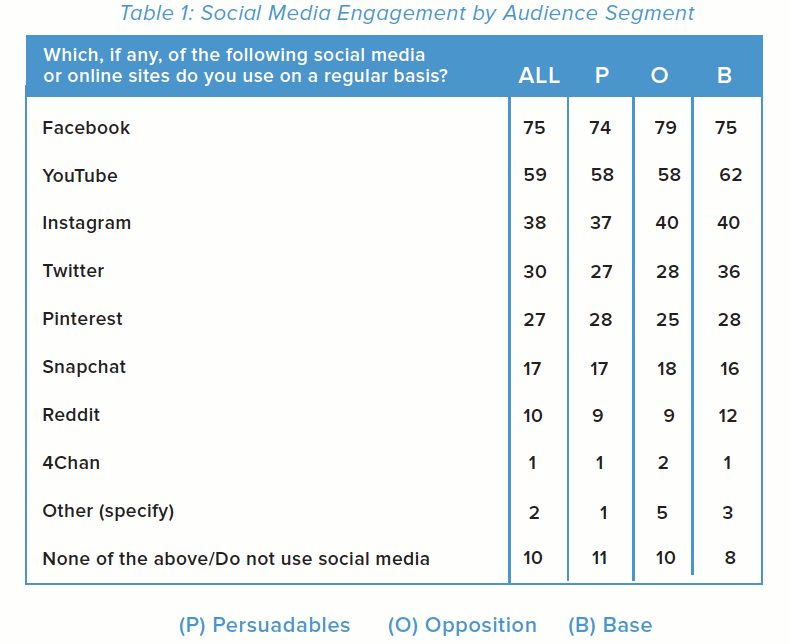
4. Police accountability is the highest policy priority identified among all segments
We asked respondents to rank a range of policy solutions intended to reduce unfairness within the criminal justice system from highest to lowest priority (with each respondent given the option to rank every item as a high, moderate, or low priority). Across all three segments “holding police officers who use excessive force accountable,” “addressing instances of police brutality,” “ensuring people of color are treated fairly by law enforcement and within the criminal justice system,” and “minimizing the interactions people suffering from substance abuse have with the criminal justice system” were ranked as the highest policy priorities.
5. Bail reform and issues at the intersection of homelessness and criminal justice are lower priorities among both base and persuadable audiences
Our survey findings indicate that despite widespread recognition of inequities within the criminal justice system and how these inequities disproportionately impact communities of color and those living in poverty, voters are less likely to see bail reform and the treatment of homeless Americans by law enforcement as a high policy priority. Just 47 percent of those surveyed selected “minimizing the interactions people living in homelessness have with the criminal justice system” as a high policy priority (67% of the base, 38% of persuadables, and 35% of the opposition). At the same time, just 45 percent of those surveyed ranked “reducing the cost of bail for low-income Americans” as a high policy priority (59% of the base, 39% of persuadables, and 37% of the opposition).
6. More than half of Californians report knowing someone who has been arrested, and nearly 50 percent know someone who has been incarcerated
In July 2018, 56 percent of surveyed Californians reported that they personally know someone who has been arrested, 49 percent know someone who has been in prison or jail, and a third personally know someone who has been a victim of a violent crime (Table 2). The rate of self-reported experiences with the criminal justice system varies between audience segments, with the base and persuadables more likely than the opposition to report knowing someone who has been arrested (66% and 53% versus 46%, respectively), in prison or jail (59% and 48% versus 40%, respectively), or stopped and searched by a police officer (52% and 38% versus 33%, respectively). Alongside widespread first- and/or second-hand experiences with the criminal justice system, the base is significantly more likely than both persuadables and the opposition to report knowing someone who has been the victim of a violent crime (42% versus 30% and 29%, respectively) or murdered (22% versus 14% and 9%, respectively)—a finding that is one of the most significant variations between base and persuadable audiences in California.
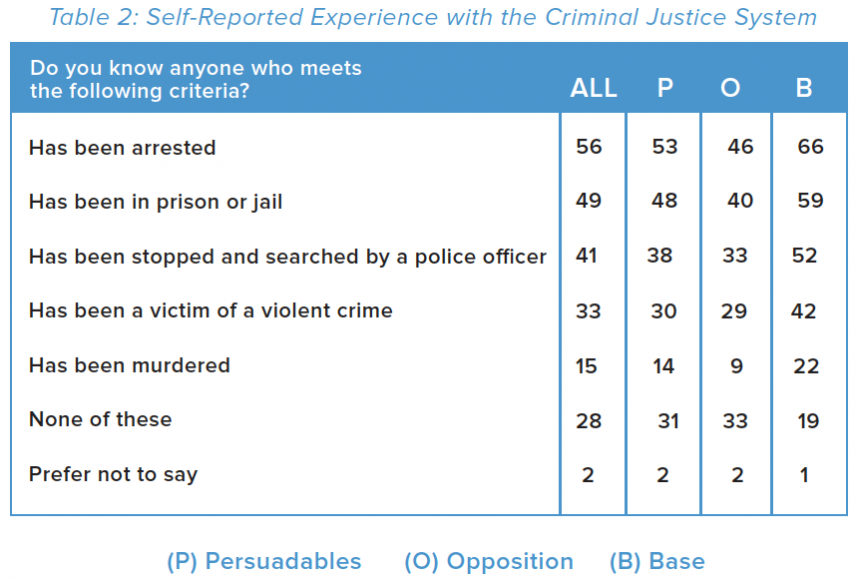
7. Perception of physical safety is a key predictor of attitudes toward and perceptions of the criminal justice system
As noted in our analysis of existing public opinion research related to criminal justice, fear of crime and victimization have long been recognized as a driving force behind Americans’ attitudes toward criminal justice policy. In an effort to examine this relationship more closely in the context of California, we included a series of questions intended to gauge respondents’ level of fear related to their physical safety and the impact, if any, on their attitudes toward criminal justice. Respondents were asked how often they have serious concerns about their safety in a range of places, including at home, while driving, or in their neighborhood, and they ranked this concern on a 5-point scale, from “never” to “often.” We used participants’ responses to create a fear scale, with respondents grouped as low, moderate, or high fear based on their average score.
As of July 2018, 19 percent of Californians surveyed expressed low levels of fear, 68 percent moderate levels of fear, 13 percent high levels of fear related to their physical safety. Respondents’ score on the fear scale correlates strongly with their overall perception of the criminal justice system and proved to be a stronger predictor of attitudes toward the criminal justice system than party affiliation and ideological lean. Those who reported that they were generally “often ” or “nearly always” in fear of their safety and received a high score on the fear scale were also significantly less likely than those with moderate or low fear to believe that the criminal justice system treats people unequally (26% versus 55% and 47%, respectively).
8. Those who express high levels of fear are less likely to report having any direct contact with the criminal justice system, but are also more confident in their perceived knowledge of the criminal justice system
Alongside having a marked impact on people’s overall perception and attitude toward the criminal justice system, fear related to physical safety also correlated strongly with people’s experience with the criminal justice system and perceived knowledge of the criminal justice system. For instance, individuals who scored low or moderately on the fear scale were more likely than those who scored high to report knowing someone who have been arrested (55% and 56% versus 43%, respectively), in prison or jail (49% and 49% versus 41%, respectively). All three segments report similar rates of knowing someone who has been search by a police officer (38%, 42%, and 39%, respectively). However, those who scored high on the fear scale were more likely to report knowing someone who has been murdered, with 20 percent reporting knowing someone who has been murdered versus 14 percent of individuals with moderate fear and 12 percent of individuals with high fear (Figure 2). At the same time, individuals who scored high on the fear scale were also significantly more likely to rate their overall knowledge of the criminal justice system as high (Figure 3). For instance, 44.5 percent of those who scored high on the fear scale also scored high on the self-reported knowledge scale—that is, what they said they knew about or their familiarity with various components and roles within the criminal justice system, including judges, prosecutors, public defenders, and bail bond companies.
At the same time, those with moderate or low fear were also significantly less confident about their knowledge and familiarity of the criminal justice system, with only 27 percent of those who scored low on the fear scale rating their knowledge of the overall criminal justice system as high.
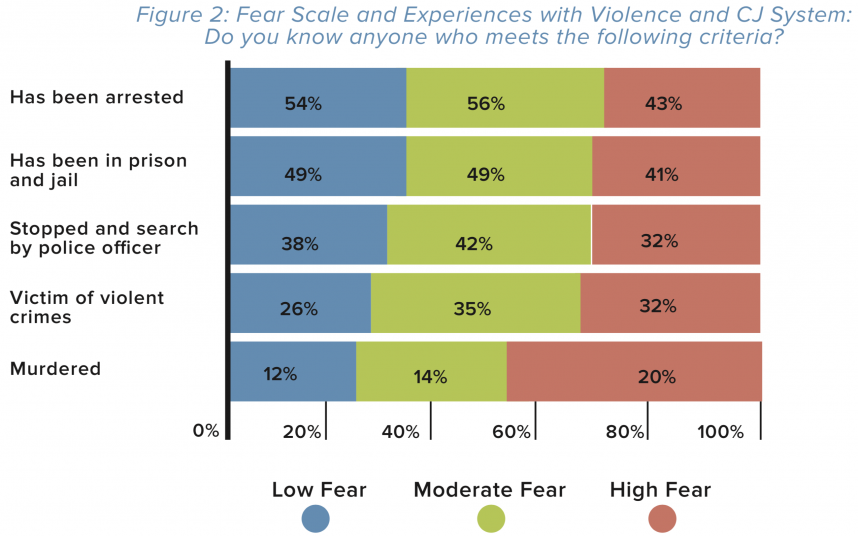

9. Californians believe that Black men, people living in poverty, people without documentation, formerly incarcerated people, and immigrants are the least likely to receive fair treatment within criminal justice
Our findings show that although a plurality of Californians believe that the criminal justice system generally treats people fairly, responses to this question varied significantly between audience segments and also when participants were asked more specific questions regarding who is more or less likely to receive fair treatment. When asked to what extent different demographic groups are treated fairly or unfairly by the criminal justice system, the majority of Californians expressed the belief that Black men (59%), people living in poverty (58%), undocumented immigrants (53%), people who have been incarcerated (53%), and immigrants (52%) are somewhat/very likely to receive unfair treatment in the overall criminal justice system (Figure 4).

10. All segments appear to make a distinction between “unequal” versus “unfair” treatment within the criminal justice system
A key finding of our survey was that Californians across audience segments are significantly more likely to express the belief that the criminal justice system is “unequal” as opposed to “unfair.” Using a random split sampling, we asked 50 percent of respondents in general how “fairly” and the other 50 percent how “equally” they believe the criminal justice system treats people. As seen in Figure 5, whereas 73 percent of the base expressed the belief that the criminal justice system generally treats people “somewhat/very unfairly,” 95 percent of the base express the belief that the criminal justice system generally treats people “somewhat/very unequally,” representing a 22-point variation. A similar trend emerges among both persuadables and the opposition, with a 17-point variation among persuadables and 7-point among the opposition.
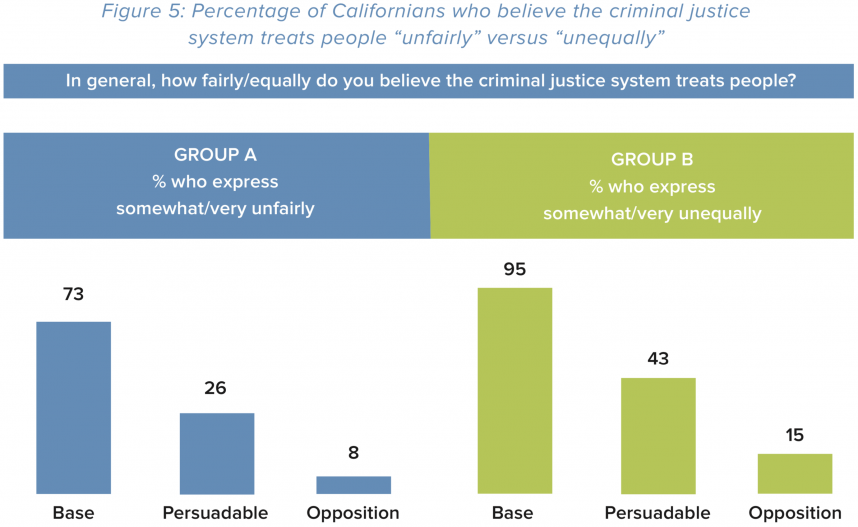
MESSAGING RECOMMENDATION
